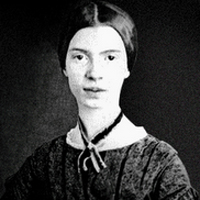Much Madness is Divinest Sense by Emily Dickinson: Summary and Critical Analysis
The poem Much Madness is Divinest Sense by Emily Dickinson can be interpreted as a strong voice of protest against the system that follows the rules of the majority even it is wrong and disregards the minority even if it is right. But for Dickinson it is the truth that is more important than the number of people for or against it. The poem is a strong voice of individuality and personal freedom.

Emily Dickinson (1830-1886)
Dickinson despises (dislikes) the life of the frogs that croak in the same tone without understanding what the sound really means. The poet expresses her anger towards the society for curtailing (limiting) the right and freedom of an individual. She is clearly unhappy with the system in which you have to accept even something fundamentally illogical simply because that is accepted by the majority.
To a sagacious and a discerning eye, madness is a kind of divine sense. The madness of poets and philosophers is often described as divine frenzy. Conversely too much of practical outlook (sense) is a kind of madness. That is how the discerning eyes of poets and philosophers view them, but sadly, the majority view prevails in this, as in all oilier things in life. If you agree with the majority, you are regarded sane. If you demur and raise objections to the majority view, you are regarded as insane and are straight away put in chains and sent to a lunatic house. The poet’s complaint is that the majority have only practical sense and they judge the sanity of a man in terms of his conformity with them. They do not understand that a genius endowed with divine madness, can demur. Poets and philosophers value that divine madness most but practical men do not.
In one sense, the poetess is defending her own position and her isolated way of life. “Much Madness is Divine” is sophisticated and wittily ironic, as well as scornful towards the society and its systems of conformity. There is no room for individuality. The poem expresses a strong feeling of personal suffering. The discerning eye represents the person who sees that choosing what the world calls sense may produce emptiness, or waste, or pretension, all of which are madness to a sensitive person. The poet expresses an increasingly mocking anger. The first three lines are illustrating the daring of independent souls. The last three lines show how they are restricted. The middle two lines provide the transition from the personal to the social level. The last three lines imply the brutal forces that the majority uses to hold people in line.
This poem by Emily Dickinson can be compared to the poem “The Lunatic” by the great Nepali poet Laxmi Prasad Devkota. In that poem Devkota prefers to be called a lunatic (mad) rather than accepting the fake (belief) notion of the majority. Dickinson also speaks in the same line. The majority of average intelligence cannot even differentiate the mentally retarded and the genius. Therefore, the poem is a bitter satire against the society who considered Dickinson as mad. It wipes out as mad. If wipes out the traditionally drawn line that differentiates the sensible and the senseless, and tries to redefine what madness is?
The poem is brilliantly constructed, with the first three lines illustrating the daring of independent souls, the last three lines showing how they are restricted, and the middle two lines providing the transition from the personal to the social level. This poem ritualizes the internalization of social bondage.
Cite this Page!
Shrestha, Roma. "Much Madness is Divinest Sense by Emily Dickinson: Summary and Critical Analysis." BachelorandMaster, 9 Nov. 2013, bachelorandmaster.com/britishandamericanpoetry/much-madness-is-divinest-sense.html.
Related Topics
Renunciation: Summary and Analysis
Because I could not Stop for Death: Analysis
I Heard a Fly Buzz: Summary and Analysis
After Great Pain, a Formal Feeling Comes: Analysis
Success is Counted Sweetest: Summary and Analysis
I taste a liquor never brewed: Summary and Analysis
A Bird came down the Walk: Summary and Analysis
Hope is the Thing with Feathers: Analysis
I like to see it lap the Miles: Summary and Analysis
I had something that I called mine: Analysis
If I should Die: Summary and Analysis
I'm Nobody! Who are you?: Summary and Analysis
These are the days when the Birds come back
What Inn is this: Summary and Analysis
Exultation is the going: Summary and Analysis
Of Bronze-and Blaze: Summary and Analysis
A Clock Stopped: Summary and Analysis
I felt a Funeral, in my Brain: Summary and Analysis
Safe in their Alabaster Chambers: Analysis
There's a certain Slant of light: Summary and Analysis
To fight aloud, is very brave: Summary and Analysis
I like a look of Agony: Summary and Analysis
Bring me the sunset in a cup: Summary and Analysis
The day came slow-till Five o'clock: Analysis
 |
bachelorandmaster.com |